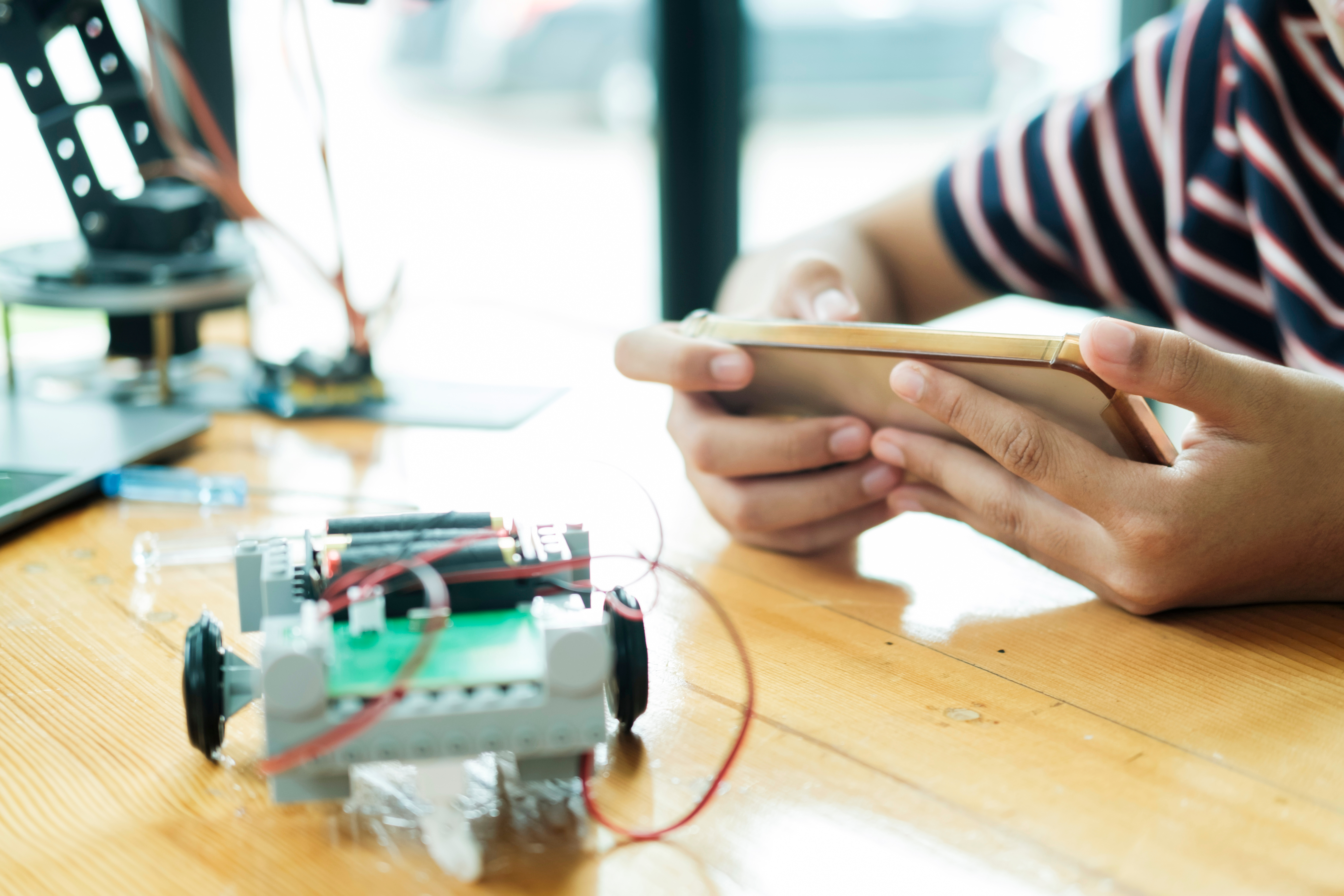Ed Tech Blog

In modern education, technology is more than a collection of tools. It has become a catalyst for connection, empathy, and collaboration. When students explore technology through the lens of accessibility, innovation becomes more than technical skill. It becomes a way of creating solutions that meet diverse needs and address real challenges.
A middle school design and technology program illustrates how accessibility projects can strengthen empathy while reinforcing the connections between Science, Technology, Engineering, Arts, and Mathematics. Students participate in a three-project unit that builds technical competence while encouraging critical thinking about inclusivity and user experience. Over time, they learn that the most effective designs are created with the needs of others in mind.
Project 1: Redesigning Everyday Objects for Inclusivity
The first project invites students to select an everyday object and redesign it for users with physical, sensory, or cognitive differences. Items such as pens, mugs, backpacks, and light switches are examined closely to reveal design flaws that may not be immediately obvious.
Students follow the design thinking framework, which involves empathizing, defining, ideating, prototyping, and testing. They identify possible challenges for users, sketch new concepts, and build simple prototypes from materials such as clay, cardboard, and foam. These materials allow for rapid adjustments and refinements during the development process.
Collaboration naturally emerges as students exchange ideas, offer constructive feedback, and combine their concepts to improve outcomes. The project shifts their perspective from asking how to make something functional to considering how to make it functional for someone with different needs. This change in thinking sets the tone for the rest of the unit.
Project 2: Creating Interactive STEAM-Based Accessibility Tools
The second project introduces electronics and coding. Students are asked to design an interactive accessibility tool that addresses a specific problem. This stage combines scientific principles, engineering skills, mathematical...
Read more: From Gadgets to Good: Teaching Empathy Through Accessible Technology Projects

High school classrooms are vibrant hubs of activity, but sometimes that energy can spill over into a level of noise that makes teaching and learning impossible. A loud, unruly classroom isn't just a nuisance; it's a major barrier to effective instruction. When the chatter and commotion take over, teachers need a toolkit of strategies to swiftly and calmly regain control. These teacher-tested methods, from leveraging a moment of silence to the power of a dramatic whisper, can help you get your students focused and back on track.
The Power of the Pause
One of the most effective tools a teacher has is the pause. When a room becomes too loud, a teacher's instinct might be to raise their voice to be heard. This is often a mistake. Yelling simply adds to the cacophony and escalates the tension. Instead, try the opposite: stop speaking completely. Stand at the front of the room, make eye contact with a few students, and simply wait. This creates a moment of cognitive dissonance. Students who are still talking will eventually notice the silence, and their own voices will become jarringly loud. The pause is a silent command for attention that works on a psychological level,
Read more: Ways to Bring Calm to a Noisy High School Classroom

Drones have soared beyond being just a novelty; they’re becoming powerful educational tools. But for a K–8 school, launching a drone program that lasts requires more than just buying a few quadcopters. It demands a well-researched strategy that tackles the challenges of cost, professional development, and assessments. A sustainable drone program should be a foundational element for problem-solving and cross-curricular learning, creating an environment where students don’t just fly drones but use them as a vehicle for innovation.
The Foundation: Why Drones in K–8?
At their core, drones offer a unique lens through which students can engage with a multitude of subjects. A drone program isn’t about creating future drone pilots; it’s about nurturing critical thinking, collaboration, and a deep understanding of STEM principles. For young learners, drones make abstract concepts tangible. They can measure the area of a school garden by flying a drone over it, understand physics by studying a drone’s flight path, and even learn about coding by programming a drone to perform a series of tasks. This hands-on, project-based approach is key to creating a lasting impact.
The cross-curricular potential is immense. In a history class, a drone can be used to capture aerial photos of...
Read more: High-Flying Learning: A Guide to Launching a Sustainable K-8 Drone Program

In today’s fast-paced and outcome-focused academic environment, students often concentrate solely on the end result—usually a grade or a test score. While achieving good grades is important, focusing only on the outcome overlooks the rich learning process that occurs along the way. This journey, which includes trial and error, reflection, and strategic adjustments, is where metacognition grows. Metacognition, or thinking about one’s own thinking, is the ability to understand how we learn, evaluate our progress, and adapt our approaches. Students who develop strong metacognitive skills tend to become more independent learners, capable of tackling new challenges with confidence and flexibility. Unfortunately, many students move through school without fully developing this critical skill, often mistaking memorization for understanding. Fortunately, teachers can foster metacognition in subtle but meaningful ways by giving students time to reflect, building their confidence, and encouraging them to value the “in-between” moments that are often overlooked.
The Importance of Time in Developing Metacognition
Developing metacognition is not something that happens instantly. It requires time for students to process new information, test different approaches, and reflect on their understanding. In many classrooms, however, the pressure to cover curriculum content quickly can make it difficult for students to slow down...
Read more: Building Confidence and Reflection: Helping Students Embrace the Learning Journey

In today’s classrooms, teaching students how to think and learn independently is just as important as teaching them the subject matter itself. Mathematics, in particular, requires a balance between skill mastery and the ability to approach problems creatively. Yet, many students arrive with vastly different skill levels and attitudes toward math. Some eagerly jump into challenges, while others hesitate, convinced they simply aren’t “math people.” One way to bridge this divide is by fostering student autonomy—giving learners more control over their learning journey. When students are given structured opportunities to make decisions about how they work, they become more engaged, more confident, and better equipped to tackle complex problems.
Technology plays a vital role in creating these opportunities. By integrating digital tools into a consistent daily routine, teachers can create an environment where students learn to manage their own progress, choose strategies that work for them, and take responsibility for their success. Rather than passively waiting for instructions, students begin to actively shape their learning experience. Over time, this shift transforms the classroom into a space where every learner feels capable of growing at their own pace.
Why Autonomy Matters in Math
Mathematics is often perceived as a rigid subject...
Read more: A Teacher’s Guide to Building Student Independence in Math Through Daily Routines

Many children are told to “study harder,” yet surprisingly few are taught exactly how to study in a way that works. Studying is not simply about sitting in front of an open book until information sinks in. It is a skill — one that can be learned, practiced, and refined over time. The start of a new school year is the perfect opportunity for parents and teachers to help children develop strong study habits that will not only improve their grades but also build a foundation for lifelong learning.
Establishing a Consistent Study Schedule
Children thrive on predictability. Creating a consistent study schedule helps them form a routine and develop discipline around learning. When study time is set for the same time each day, it becomes a natural part of the daily rhythm rather than a dreaded, last-minute obligation. For some children, studying right after school works best, as the lessons are still fresh in their minds. Others may benefit from a short break before diving into their assignments. The key is to find a time that works and stick to it. Over time, this consistency will train the brain to switch into learning mode at the designated hour, making...
Read more: Teaching Kids How to Study: Skills for Academic Success and Beyond
- Empowering Student Voice: Integrating Technology into Project-Based Learning
- Top Benefits of Using AI Tools in Education: Why Students Need Them Now
- Bridging the Gap: How K–12 Schools Are Uniting IT and Instruction to Make EdTech Work
- How to Help Students Remember More: Practical Tips to Overcome the Forgetting Curve
